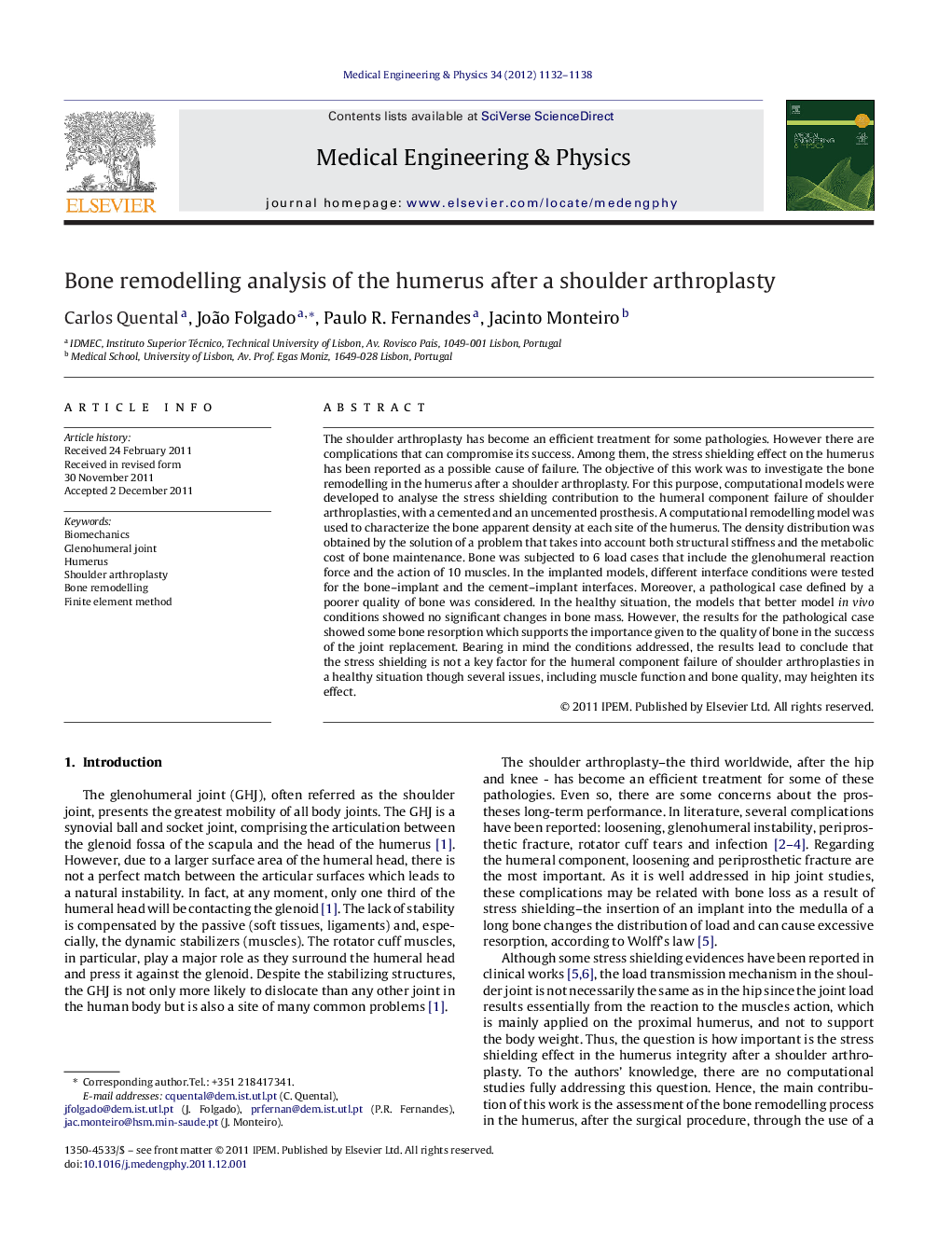| Article ID | Journal | Published Year | Pages | File Type |
|---|---|---|---|---|
| 876287 | Medical Engineering & Physics | 2012 | 7 Pages |
The shoulder arthroplasty has become an efficient treatment for some pathologies. However there are complications that can compromise its success. Among them, the stress shielding effect on the humerus has been reported as a possible cause of failure. The objective of this work was to investigate the bone remodelling in the humerus after a shoulder arthroplasty. For this purpose, computational models were developed to analyse the stress shielding contribution to the humeral component failure of shoulder arthroplasties, with a cemented and an uncemented prosthesis. A computational remodelling model was used to characterize the bone apparent density at each site of the humerus. The density distribution was obtained by the solution of a problem that takes into account both structural stiffness and the metabolic cost of bone maintenance. Bone was subjected to 6 load cases that include the glenohumeral reaction force and the action of 10 muscles. In the implanted models, different interface conditions were tested for the bone–implant and the cement–implant interfaces. Moreover, a pathological case defined by a poorer quality of bone was considered. In the healthy situation, the models that better model in vivo conditions showed no significant changes in bone mass. However, the results for the pathological case showed some bone resorption which supports the importance given to the quality of bone in the success of the joint replacement. Bearing in mind the conditions addressed, the results lead to conclude that the stress shielding is not a key factor for the humeral component failure of shoulder arthroplasties in a healthy situation though several issues, including muscle function and bone quality, may heighten its effect.
